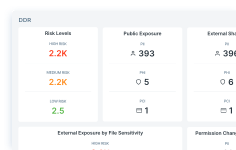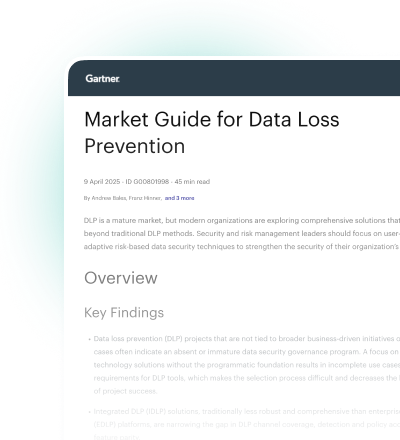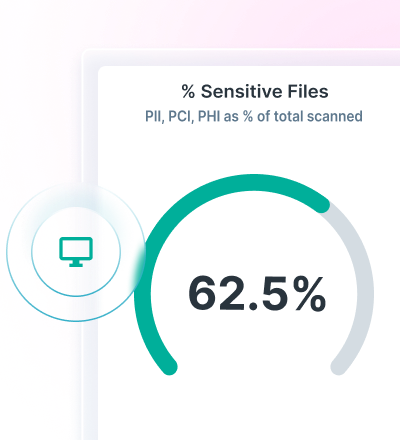Our Customers
Forcepoint safeguards thousands
of companies around the world
Leading organizations thrive securely with Forcepoint
Forcepoint helps innovative enterprises protect users, data, and networks while enabling growth

Global Aviation Leader
Read the Customer StoryForcepoint supports the future vision of this global aviation company with AI-driven tools that enhance data visibility, automate classification, and enforce unified policies—enabling secure innovation and strong data governance in an AI-driven world.

Mariner Finance
Read the Customer StoryDiscover how Mariner Finance strengthened its data protection strategy by embracing Forcepoint’s cutting-edge, AI-driven security solutions - offering a real-world blueprint for businesses aiming to safeguard sensitive information in today’s digital landscape.

Medicover Group
Read the Customer StoryMedicover Group scaled the capabilities of Forcepoint DLP from Romania to the rest of the world to protect data across 80 different companies.

The City of Coburg Protects Network Access for Students and Teachers with Forcepoint NGFW
Read the Customer StorySince purchasing Forcepoint Next-Generation Firewall (NGFW) in 2021, Coburg, Germany diligently safeguards internet access for thousands of students and hundreds of teachers.

Fundação CASA
Read the Customer StoryFundação CASA incorporated Forcepoint DLP to protect adolescents’ information from data leakage and exfiltration across all channels as its employees made the switch to remote work.

Burger King
Read the Customer StoryBurger King scaled its existing WAN infrastructure with Forcepoint Next-Gen Firewall and SD-WAN, enabling the deployment and management of policies for hundreds of its restaurants centrally, remotely and efficiently.

Advanced R&D Lab
Read the Customer StoryAdvanced R&D Lab uses Forcepoint User Activity Monitoring and Behavioral Analytics to reshape security posture

VAKIFBANK
Read the Customer StoryVAKIFBANK leveraged pre-defined policies in combination with fingerprinting and a third-party classification tool to protect tens of millions of customer records and improve compliance.

VR Group
Read the Customer StoryVR Group is implementing a Next-Generation Firewall (NGFW) to provide 200 megabytes per second of secure network connectivity on its high-speed trains traveling more than 200 kilometers per hour.

National Bank of Fujairah
Read the Customer StoryNational Bank of Fujairah secured buy-in at all levels of the business to systematically mature its data security culture and successfully deploy data-level controls.

Fortune 100 Healthcare Provider
Read the Customer StoryForcepoint ONE’s CASB enabled a Fortune 100 healthcare provider to safely deploy Office 365.

Healthcare Giant
Read the Customer StoryThe Forcepoint ONE platform unifies security to help this healthcare giant protect its complex network and maintain compliance with HIPAA, PCI-DSS and other regulations.

Fortune 500 Asset Manager
Read the Customer StoryThe Forcepoint ONE platform helped the investment firm secure its data in cloud applications like Slack, Salesforce and Office 365.

Joint Network Center (GNZ)
Read the Customer StoryNext-Generation Firewall helps the GNZ protect its high-speed network and the work of its scientists.

Retail Banker
Read the Customer StoryIn the world of retail banking, competition is fierce. Not only from the traditional high street, but also from new challenger banks and technology giants.

Fortune 500 Beverage Manufacturer
Read the Customer StoryFortune 500 Beverage Manufacturer Secures Data on Unmanaged Devices

Eczacıbaşı Holding
Read the Customer StoryEczacıbaşı Holding Extends Security to the Cloud to Protect Remote Staff

Evalueserve
Read the Customer StoryDelivering Agile and Secure Business Intelligence and Analytics Services with Forcepoint Solutions

Buró de Crédito
Read the Customer StoryForcepoint NGFW Helps Buró de Crédito Achieve Dramatic Business Transformation and Growth By Safeguarding Customer Connections

Acme Brick
Read the Customer StoryAcme Brick lays the foundation for cloud security with Forcepoint CASB


Global Network
20+
Countries
45+
Cluster Nodes
Clustering In a Way No One Else Can Do
Christian Keller, CISO at HUBER+SUHNER, lists reliability, clustering, and ability to navigate global compliance requirements among the top benefits of Forcepoint NGFW.









